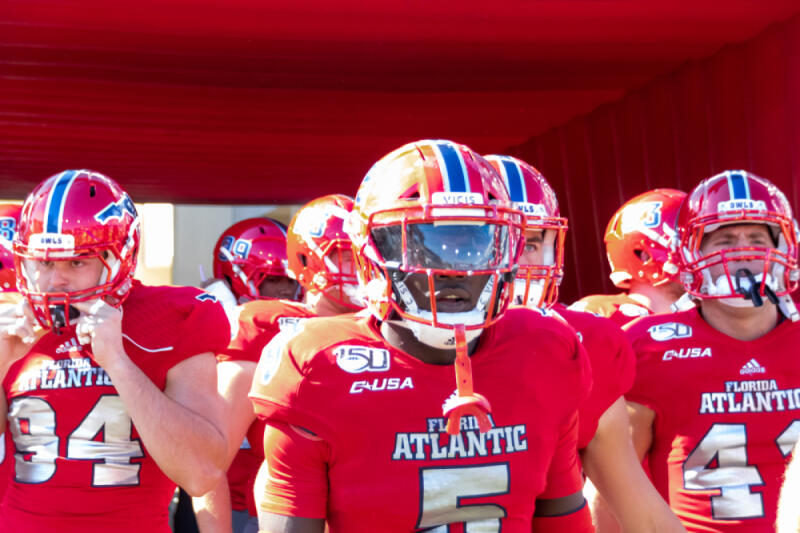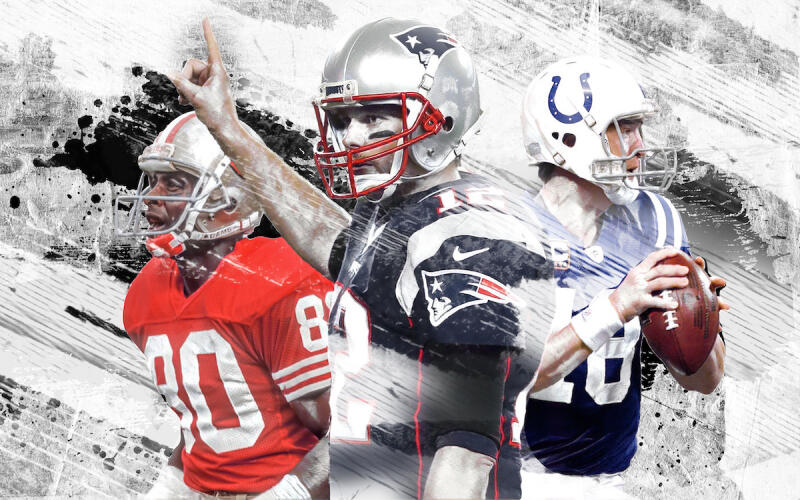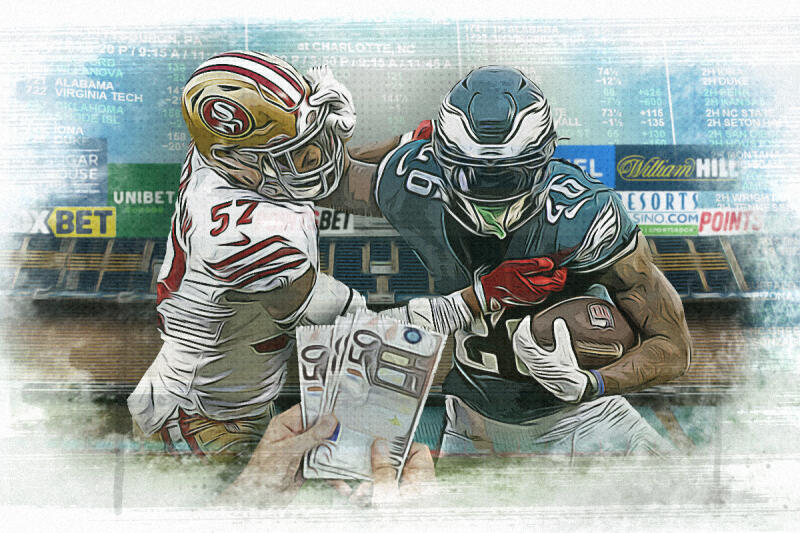DFS Pick'em Strategy Guide
Underdog Fantasy is a popular fantasy sports site best known for its sizable "best ball" contests. These are season-long fantasy contests, but Underdog also offers daily fantasy. One of its main daily formats is its proprietary Pick'em contests.
Other sites throughout the industry offer similar contests, including PrizePicks and SuperDraft. However, despite featuring similar qualities, these sites are not promoting their products as "pick'em" contests. Here we will discuss Underdog's Pick'em offering, but many of the same principles can apply to any similar prop-based daily fantasy platform.
DFS Pick'em Overview
The basic idea behind DFS "pick'em"-style contests is the first thing to understand. Traditional DFS involves assembling a roster of players ranked based on their collective fantasy point production. With Pick'em as Underdog Fantasy offers, the game format resembles prop betting. Let's get into it in a little more detail.
Pick'em is a game that is based on predicting player statistics. The objective is to create a two to five-leg entry consisting of an option of "Higher" or "Lower" for each selected leg. For each selection, you are essentially picking the over/under on Underdog's stat line for a specific player statistic (like a prop bet in a traditional sportsbook).
In context, you essentially bet a parlay of proposition (prop) bets between two and five selections. Yet, due to the exact nature of the contest structure and prize pool, it is considered daily fantasy sports and not sports betting. This allows these types of contests to be legal in states where betting is not, yet the game's principle is very similar.
To win, all chosen selections must connect unless you opt for insurance (we will add more on that below). If one of your selections "pushes" (lands exactly where the over/under is set), your entry is not void unless it is a two-leg entry. Instead, it is treated as an entry with one less leg regarding the payout, meaning a five-selection entry becomes four, and so on.
DFS Pick'em Strategy
Before we get into the exact strategy, it is important to note that this analysis is specific to Underdog Pick'em. The precise details will vary if you are playing on a similar prop-based site, but many of the same principles can be applied.
You will want to look at a combination of odds compared to payouts and success rates for the different sizes of entries available. These sites generally implement a parlay-style contest entry concept, and the number of legs you add to your entry can drastically impact your potential success.
Using player projections to find discrepancies between the over/unders set by the sites and statistical models is a key factor to consider, regardless of which site you play on. Looking for correlations between individual picks based on their nature and the sport involved is another key concept, much as it is with traditional DFS.
Of course, you must make the right selections based on player performance on any given day. However, this has a lot to do with the luck of the draw if you are an average recreational player. If you are pulling from advanced analytical models that provide better player performance predictions than the oddsmakers at your site of choice, you may have a real edge in your picks. Otherwise, you likely have close to a 50/50 chance of any of your selections winning.
For this reason, it is essential to consider the odds first, just as it is with any form of gambling. So, let's start there.
Syncing Pick’em with Chalkboard
Even though both are DFS providers, Underdog Fantasy and Pick’em do not need to compete with Chalkboard. As discussed, the app is home to some of the most engaged DFS communities, and therefore, you can link your Underdog Fantasy Pick’em selections to your Chalkboard groups. This way, you and your friends are following the results in real time, and actively seeing how each other is doing. Chalkboard is a great enhancer of your Pick’em experience.
Chalkboard Streaks (This can be used for any article that needs an explainer)
Another exciting contest is Chalkboard Streaks. This is a DFS game that has acquired notorious popularity, especially since its parent app, Chalkboard, has been instrumental in growing thousands of DFS-related communities. When playing Streaks, basically you are selecting from two to eight statistical player projections, which need to include at least two players from different teams. Then, you need to predict if each of the chosen players will be over or under a specific performance metric determined by Chalkboard.
The more you add predictions to your contest, the more your potential payout multiplier grows in case your predictions are right. Chalkboard Streaks pays a maximum of 50x your entry fee, and payouts are capped at $1,000. Since the minimum entry is $1, this is considered a good deal.
If this sparks your interest, download Chalkboard here and give it a try. At the very least, you are sure to find yourself engaged in its thriving communities and its live game hubs and stats trackers are top-notch features to stay on top of how your favorite teams are doing.
DFS Pick'em Odds
The first thing we need to look at when analyzing DFS Pick'em strategy for Underdog or any similar site is getting the best odds on your contest entries. This can make or break you, regardless of your selections. First, let's look at the differences in odds between the various Pick'em entries you can make regarding the number of legs per entry.
| Picks | Multiplier | Entry Odds | Implied Selection Odds | Break-Even Rate (Selection) | Break-Even Rate (Entry) |
| 2 | 3x | +200 | -136 | 57.7% | 33.3% |
| 3 | 6x | +500 | -122 | 55.0% | 16.7% |
| 4 | 10x | +900 | -128 | 56.2% | 10% |
| 5 | 20x | +1900 | -122 | 54.9% | 5% |
Analysis of the multipliers makes it clear that the three and five-leg Pick'em entries are the best options. They have the strongest odds per selection and the smallest success rate per selection needed to break even. Independent of your strategy in selecting your picks and assuming the over/under is set entirely accurately by Underdog, you will have a higher chance of success by simply sticking to these types of entries.
It is worth adding a caveat that while the two-leg option is clearly the worst in simulated long-term return on investment (ROI), the four-leg entry has some merit. Its odds compared to the multiplier are fairly close to equal and closer than the three-leg option. However, the higher break-even rate per selection and lower break-even rate per entry ultimately put the four-leg choice below the three-leg in long-term profit probability.
All things considered, the five-selection entry type is the best choice over a considerable sample size. Nonetheless, it may be hard to sustain a limited bankroll as the break-even rate per entry is low, and it would be easy to go on a long down streak. It is likely best to balance out your five-leg entries with three-leg entries for short and long-term success potential.
DFS Pick'em Insurance
Another option is adding insurance to your contest entry, assuming it is over two picks. Here your payout is diminished, yet you can receive your buy-in amount back or even slight winnings if one of your selections loses.
This is much like parlay insurance at a traditional sportsbook. Yet you sacrifice payout for the luxury and can actually win a small amount even if a selection loses on four and five-picks. Here we will analyze the difference in odds when adding insurance to your entries to see if it is worthwhile.
| Picks | Multiplier (All Selections Hit) | Multiplier (One Selection Misses) | Entry Odds | Implied Selection Odds | Break-Even Rate (Selection) | Break-Even Rate (Entry) |
| 3 | 3x | 1x | +418 | -137 | 57.8% | 19.3% |
| 4 | 6x | 1.5x | +942 | -122 | 55% | 9.6% |
| 5 | 10x | 2.5x | +1941 | -121 | 54.8% | 4.9% |
Based on data analysis, opting for insurance on a three-pick is not a good decision. The break-even rate per selection is high, the implied odds per selection are lower, and your multiplier when one pick loses is 1x. Long-term data analysis shows that this is an extremely unprofitable option.
Yet, despite sacrificing considerable profit ceiling per entry, four and five-leg insurance is not entirely unviable. If you choose to opt for insurance, it is best always to do this on four and five-picks.
DFS Pick'em Projections
We've discussed the odds, and these are of crucial importance. Regardless of your picks, you are far more likely to experience long-term success sticking to contest entries of the sizes we have recommended. The over/unders set by Underdog are very close to market efficiency, meaning that only the best statistical models might actually offer value in terms of which picks to make in and of themselves.
Yet, it is still wise to consider looking at some of the best player projection systems in the daily fantasy industry when making your Pick'em entries. Some offer not only fantasy point production projections but actual individual statistical projections. If you see major discrepancies between the projections and the site you are playing on and trust your model, this is likely a good pick.
This way, you are using data in making your selections rather than feel and intuitive predictions. Some highly advanced sports gamblers may even have their own statistical models, but they will likely not be reading this as they would have better things to do.
For that reason, you will likely need to outsource your projections. The good news is that some great options are available throughout the industry, albeit the best of them are behind the paywall. Finding major discrepancies between the Underdog over/unders and a reputable projection system is likely your best option for spotting a legitimately +EV (expected value) pick.
Using Sportsbook Lines for DFS Pick'em
While using a highly advanced projection system catered to DFS and betting can be a great option, another solution exists. This option is also free, offering another strong benefit for many of us.
The top sportsbooks in the industry, such as Caesars, BetMGM, and others, use highly advanced metrics to generate prop-bet odds and lines. They will often wind up close to an industry consensus, influenced by their own statistical models and the betting public.
Comparing these lines to those that are offered at Underdog and other similar prop-based fantasy sites is another way of finding discrepancies. In most cases, what you will find as an industry consensus at the top sportsbooks will be about as sharp as it gets. If you find lines or odds that drastically differ from Underdog's, this can provide you with a +EV pick.
Of course, the most prominent example would be that the actual stat line over/under differs between the sportsbook consensus and the fantasy site. You may, however, rarely see this.
More commonly, the odds offered on a prop's over/under may differ so that the implied odds per selection on your contest entry are better than what the sportsbook offers. This is a beneficial situation that you will generally want to jump on.
Through diligent analysis of sportsbooks' lines and odds, you will give yourself a better chance of making +EV picks. You stand a real chance of success between this and making your contest entries of the optimal selection size to provide the best odds.
If you are flying in the dark in both of these regards, it will take good luck for you to enjoy any success. By implementing these approaches, you are taking matters into your own hands and giving yourself the best chance to win.
DFS Pick'em Correlation
Anyone who has played traditional DFS on sites like DraftKings and FanDuel with any level of seriousness has considered the idea of correlation. It is as simple as pairing a wide receiver with your quarterback since they will inherently rack up points together in most instances. That or "stacking" (playing multiple players from) an MLB offense in the hopes that they score a lot of runs, and in turn, many of the players succeed.
In the Underdog Pick'em format, this scenario can come into play. It is similar to the betting concept of playing a same-game parlay allowing some beneficial correlation between plays. Although, of course, sportsbooks generally limit anything too beneficial for the bettor in this regard.
For some examples of correlation where they are allowed by Underdog and similar fantasy sites, you would use similar common sense principles that you would in standard fantasy. If you pick the over a quarterback's total yardage, you might pair that with the over on a wide receiver's receiving yards. You would also avoid negative correlations like going under on one and over on the other.
Other prominent examples of correlation would include an NBA point guard's assists with an NBA scorer's total points. You might choose the over on an NBA center's total rebounds while taking the under on his opponent's. In the MLB, perhaps you would consider correlating picks based on a pitcher's success or lack thereof compared to opposing hitters.
Of course, the correlation may be fairly minimal depending on the exact prop (the MLB example above is a good one). Just because a pitcher has a bad game doesn't mean a particular hitter will have a good one. Even if a point guard has many assists, that doesn't mean a particular teammate will be the one scoring.
Still, the chances of certain scenarios occurring together are certainly higher than separately. Considering correlation, at least to a degree, is a smart way to give yourself a better chance to win. It may also be easier for casual sports fans to consider correlation in their decisions rather than sportsbook odds and statistical projections.
DFS Pick'em Recap
Ultimately, the three main ways to succeed at the Underdog Pick'em format or any other similar prop-based DFS are fairly simple. Let's recap.
Entry Size
In Underdog's case, be sure only to play three and five-leg entries uninsured. If you do play insured entries, only play four and five. For other sites, ascertain the highest-EV entry sizes and stick to them religiously.
Educated Picks
Stick to making your picks based on some form of data-based strategy. Either find beneficial discrepancies between top sportsbook lines and odds versus those of the DFS operator, or the same but using trusted statistical models.
Correlation
Take into consideration how different picks correlate with each other. If statistics for one player are more or less likely to accompany those of another, ensure you use this to your advantage and certainly avoid negative correlation in your picks.
DFS Pick'em Conclusion
While Underdog Pick'em contests and other similar DFS formats can initially seem intimidating, they are quite simple. You can use concepts similar to those of regular DFS, such as considering sportsbook lines and odds, using industry projection systems, and implementing correlation strategies. If you are familiar with traditional sports betting, they are also very similar to betting props and parlays.
Above all else, analyze the benefit of various entry sizes to ensure you only enter those with the best odds and potential long-term ROI based on them. Secondly, be sure to use the resources available to make smart picks. This way, you know that you are giving yourself the best opportunity to succeed.
Ultimately, the performance of athletes compared to your picks will have to go right for you to win contest entries. Still, you can leverage math and data on your side and give your entries considerably more chance of success by implementing the abovementioned concepts.
Our editorial content strives to be highly informative and educational to our audience, especially for visitors who are new or relatively new to analyzing and predicting sporting event results. All of our content is created by informed writers with backgrounds in their subject area and reviewed for omissions or mistakes.
Our editorial team is run by individuals with many years of experience in digital publishing, editorial, and content production. Our editorial content is always marked clearly in any instances where it may be sponsored by a third party, though it is still reviewed by our staff to ensure it remains consistent with our company mission.
- Popular
- Latest





